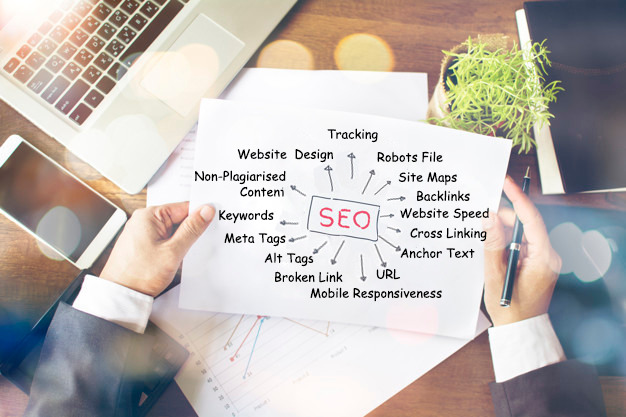The world of internet took a dramatic change with the revolution of the same. What comes to your mind when you hear the term content? It is usually considered as texts but the concept has expanded to videos, gallery, and much more to the webpage.
With up-gradation of technology and more of competition, the websites (webpages) are in a race to rank itself on the top of search engines. To rank on the search engine by working and putting in efforts on both front-end (what is visible) and back-end (what is not visible but effects the website/webpage) is termed as Search Engine Optimization or SEO. In simple words it means optimizing the factors that affect the position of a website.
SEO or Search Engine Optimization is basically categorized into two parts-
- On-Page
- Off-Page
On-Page Optimization includes improving the parameters that are visible on the website by the users and the viewers who land on the website depending on the search operation they execute. Off-Page Optimization includes putting in efforts to improvise the back-end of the website and submit its contents in various forms to help the search engines read the contents of the website and convey the relevancy of the same to the users.
In this article we shall discuss the on-page factors in details which help in ranking of a website. To understand that we must need to know how the search engine works. It considers how the website is designed and how much information is provided to the viewer’s keeping in mind the relevancy and what the viewers are looking for. New factors are added frequently and the websites need to be updated with the modifications.
Now let’s go one by one through the factors of On-Page Optimisation. They are listed as follows:-
- Website Design- The website should be designed and planned in such a manner so as to make it easy and convenient for users to navigate from page to page. Be it any number of pages to the website, it should be linked to the homepage so that the users can find exactly what they are looking for and also help Google crawler to index the pages simultaneously.
- Non-Plagiarised Content- The content published on the website should be unique, planned and definitely original. It should be brief, to the point and in a language that is understandable by one and all. Plagiarized or duplicate content is ignored and given zero value to by the search engines making the website valueless. Thus, it is advised to provide original and unique content that justifies your service or product that is being searched for.
- Keywords- Keywords are nothing but usually the searched terms that are used in the content to make it easy for viewers to find what they are looking for. Not any random keyword should be used. A proper analysis is made to obtain the list of keywords that are relevant to the niche or industry which are commonly used to search on the search engines. Using of relevant keywords help the crawlers to index the webpages accordingly and make it possible to easily view the pages on the search engine ranking them according to the relevancy.
- Meta Tags- These are tags that are used in the text based content of the website. It includes the title and description of the pages respectively. To optimize it, a character count is imposed where it is advised to use keywords for easy to access pages.
- Alt Tags- Alt tags are nothing but tags used for images. These are also termed as image texts. It implies using of keywords for images so that crawlers can index the images and read it easily.
- URL- The URL or Uniform Resource Locator of pages are to be named in a format to make it user friendly, i.e easy to remember and land on the required page directly without searching for the entire website. The URL should be made easy to understandable for the user so as to navigate.
- Broken Link- The links that do not re-direct to the landing pages should be fixed. A valid link should be executed.
- Anchor Text- The texts that link the users to either internal pages of the website or to some other website with similar niche and relevancy are termed as anchor texts. These texts provide more information to the viewers which help them to gather more knowledge on the topic searched for.
- Cross Linking- It refers to linking your website to other relevant websites for more information.
- Website Speed- The speed of the website is an important factor in SEO. If the speed is too high, there is a chance of increase in bounce rate, i.e. the users may leave the website and land on other websites that are faster.
- Mobile Responsiveness- Nowadays mobiles are handy and a high percentage of people search on mobile, thus the website should be responsive which means every detail should be visible and writings should be readable.
- Backlinks- Inter-linking of websites is known as backlinks. These help in increasing the page and domain authority of the page which is linked to other website. There are criterion that are to be taken into consideration during back linking for improving the value of the website.
- Site Maps- Site-maps are generated for crawlers to crawl and index each page of the website.
- Robots File- Certain pages are blocked in a website from the crawlers that are not to be indexed which are placed in the robots file so as not to affect the ranking of the website.
- Tracking- This is the last but not the least factor where the page is tracked from indexing to ranking.

